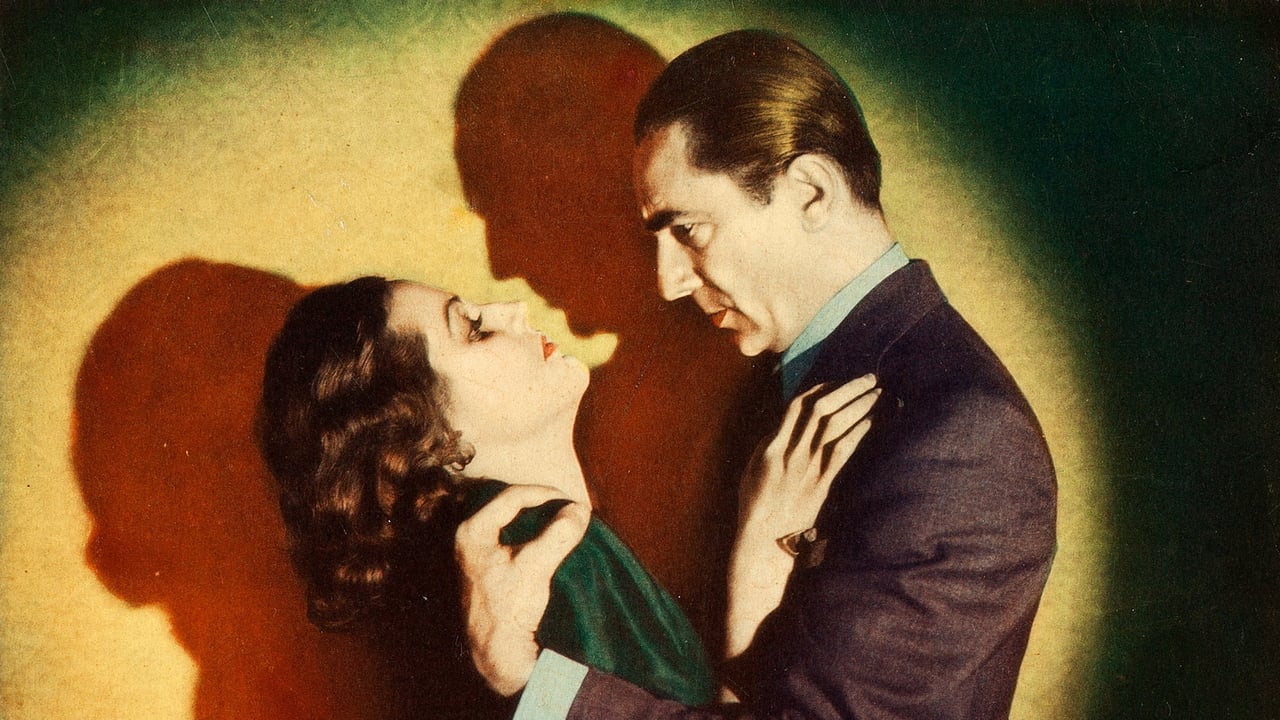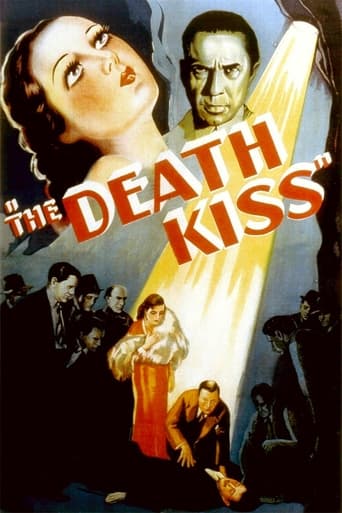

First, we're tricked into thinking this is a vampire movie by its title, then we're tricked into thinking this is a Bela Lugosi movie................. with no big payoff. The fake-out ending: an actor is killed on-camera, while filming a scene in which his character is shot and killed. When footage is played back, in an attempt to spot the killer, the footage burned by an unknown person before the key moment. Since the dead man was very much disliked on the set, there is no shortage of suspects in the killing. A motor-mouthed, wisecracking mystery writer is determined to find the killer, and clear the dead man's ex-wife, his own current love interest. Despite its misleading title, this was a potentially good 1930s murder mystery, but drenched in one-liners and wisecracks. About one quarter of them are amusing, the rest are just tiresome and distracting. Overall the film ends up being confusing and anticlimactic, with dramatic changes in the tone throughout, and it wastes Bela Lugosi in a nothing background role, while giving David Manners seemingly endless opportunities to hog the spotlight.A few effective scenes scattered throughout, and it is interesting as a pseudo-"behind the scenes" look at the making of a movie in 1930s Hollywood, also to catch a glimpse of the (now long out-dated) equipment and filming routines makes this worth watching, but it's a disappointment, because despite being top-billed, Bela Lugosi has perhaps 15 minutes of screen time, and few lines.The version that I watched was in black-and-white, but allegedly there is another version of this, with several colour-tinted scenes, which I would still like to watch.
... View More"When an actor in a mystery film called 'The Death Kiss' ends up killed during a drive-by shooting scene, the film's screenwriter Franklyn Drew (David Manners) takes it upon himself to investigate. Among the suspects are an actress named Marcia Lane (Adrienne Ames), who is not only the dead actor's widow but also the screenwriter's lover, and Joseph Steiner, an arrogant studio executive played by Bela Lugosi," according to the Alpha Video DVD sleeve description. Future releases, if there are any, should correct the credit "Directed by Phil Rosen". And, always look for a version that includes the restored colorized sequences.This minor classic is smoothly orchestrated by director Edwin L. Martin and entertainingly managed by the cast and crew."The Death Kiss" is one of those old public domain films sold by vendors capitalizing on the title and Lugosi's appearance in the cast to suggest horror. Although it reunites three horrific "Dracula" (1931) actors, this is strictly a mystery. The story wasn't original, but seemed fresh in the new talking pictures medium. The aforementioned stars are joined by Edward Van Sloan as the director who unknowingly scolds his star murder victim for hamming up his demise. For a retake, the director advises expiring actor Edmund Burns (as Myles Brent), "When you die this time, let's have less gymnastics, and don't spin like a top when you fall." ****** The Death Kiss (12/5/32) Edwin L. Marin ~ David Manners, Adrienne Ames, Bela Lugosi, Edward Van Sloan
... View MoreThe emergence of self-reflexivity is always a sign that a certain final level has been reached in the development of thinking or art. Early literature is not self-reflexive: the love-songs of the minstrels are not personal, but following abstract schemes. The antique novels are not narrated in the first person. The individual is hiding behind an invented protagonist. Also early film did not thematize film itself. Perhaps at the basis of avoiding self-reflexivity is the fear to recognize oneself in the mirror. This had been extensively dealt with in the work of E.T.A. Hoffmann. The motives of losing one's mirror-image or one's shadow roots in this fear. In mathematics, iteration leads quickly leads to the well known paradoxes which cannot be solved in classical logic and which let whole system break together."The Death Kiss" (1932) is now in at least three ways an outstanding example of early talky film: First, it is the story of an actor who has to be killed for the shooting of a movie, but at this occasion gets actually shot to death. Second, the movie is a movie on a movie. And third: "The Death Kiss" is both the title of the movie and of the movie in the movie. Furthermore, a special effect is reached - if one wants: number four - by the fact that the actor who wrote the scenario for the movie in the movie (and also for the movie?), which is a criminal story, is also the one who will in the end solve the murder case and deliver the killer to the police which seems to be unable to go ahead without the author of the scenario. As number five, one could mention that Bela Lugosi, who just had played one year ago (1931) the main role in "Dracula", is naturally assumed by the audience to be the villain. But that is not all: As audience, we witness that the detective-author who "investigates" the case also seems to assume over almost the whole running time of the movie that the character Mr. Steiner, played by Lugosi, is in fact the killer. Only in the last couple of minutes we see with him that it is someone else. Herewith not only the expectation of the audience is cheated, but we are forced to follow the progress of the detective-author in our own considerations, i.e. we more or less get ourselves a part of the movie, so that the movie plays on three and not only on two levels: 1. The movie, 2. The movie in the movie, 3. In our perception of the movie and of the movie of the movie. This is an amazing and often overseen movie, and considering it early date quite outstanding.
... View MoreIt's a plot device that's been used many times since, but The Death Kiss may have been the first time an actor was killed on set when someone fired a real bullet instead of blanks (at least it's the first I know of). Studio writer Franklyn Drew (David Manners) takes it upon himself to "help" the police find the killer – whether they actually want him snooping around or not. It seems that Drew has a thing for the film's leading lady, Marcia Lane (Adrienne Ames), a prime suspect because of her past relationship with the dead man. With lots of clues, red herrings, and no shortage of suspects, Drew's got his work cut out for him.The Death Kiss is far from being a great movie, but for a low budget poverty row thriller/mystery, it's not half bad. One of the more interesting aspects of the film is the reuniting of Dracula alums Manners, Bela Lugosi, and Edward Van Sloan. Unlike Dracula, however, this is Manners' film with his scenes and importance far out-stripping his better known co-stars. In fact Lugosi is given very little to actually do other than stare suspiciously and mysteriously at anyone who gets within his gaze. Another positive aspect is the relationship between Manners and Ames. They work well together and make a very believable couple. First time director Edwin L. Marin does a more than adequate job with this early talkie. He seems to have an understanding of the medium and how to use it. The plot includes plenty of twists and turns to keep the viewer's interest. And the final outcome and reveal, though dependent upon coincidence and a bit of dumb luck, is more than satisfactory.
... View More